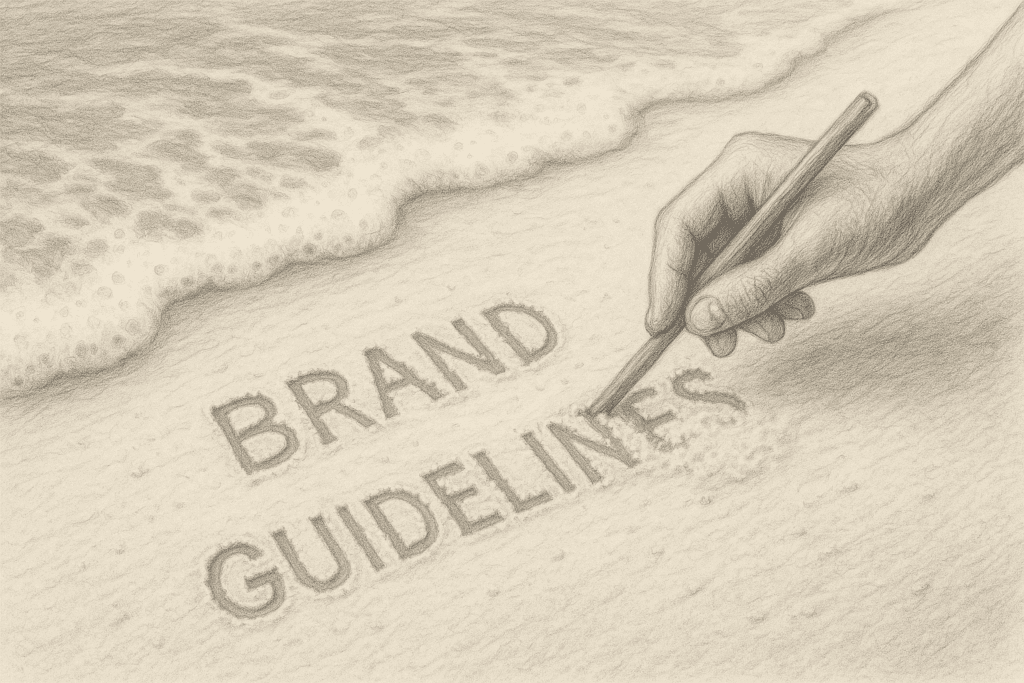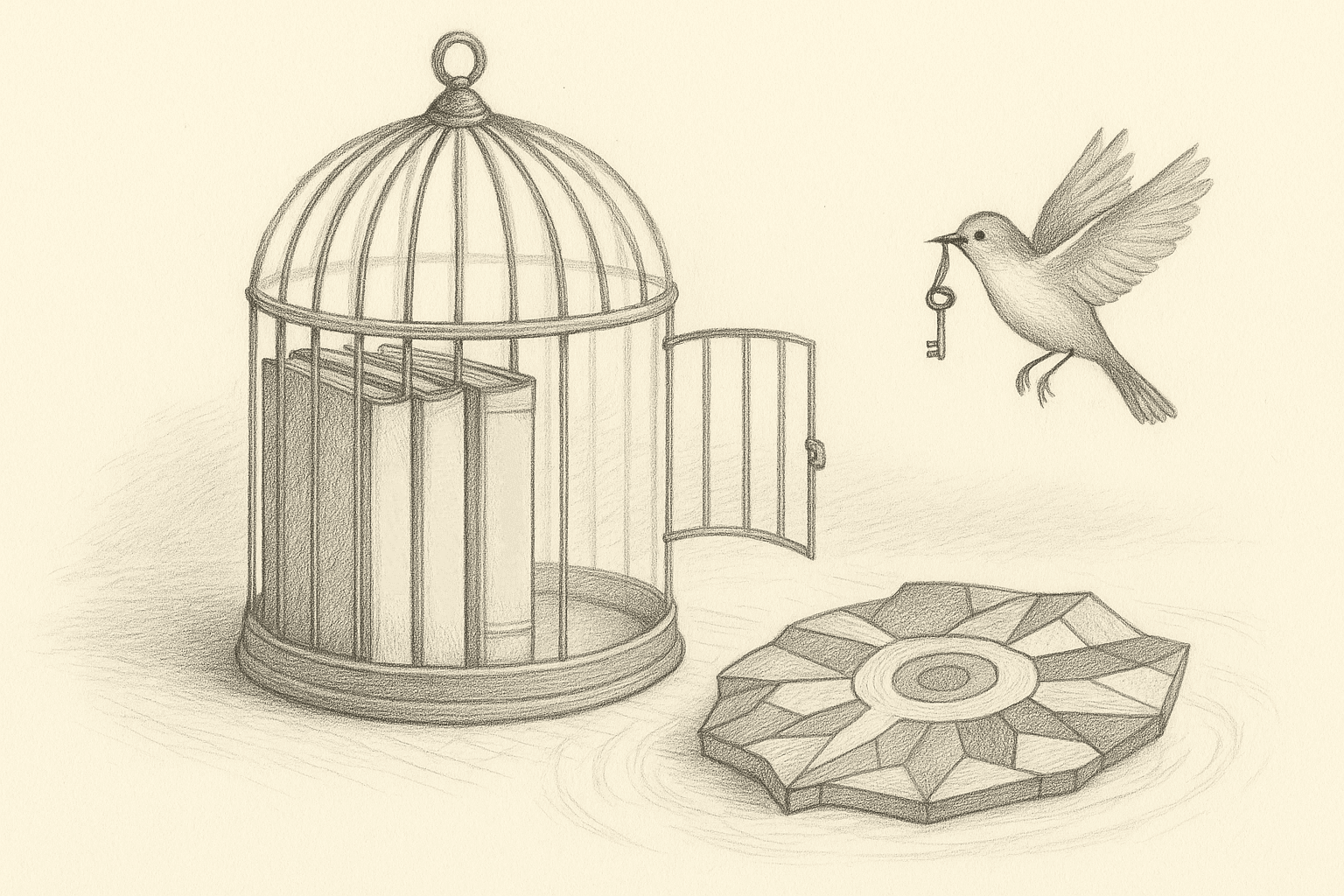I’ve been watching brands tie themselves in knots lately. They’re caught between old playbooks that preach consistency and young teams who see those playbooks as rules written for a world that no longer exists.
The tension is real. A heritage outdoor brand considers a partnership that would have been unthinkable five years ago. A financial services company wonders if formality still signals trust. A nonprofit questions whether their earnest tone is reaching anyone under 40.
Behind each of these moments is the same underlying question: When does protecting your brand become suffocating it?
What is Strategic Brand Rule-Breaking?
Strategic brand rule-breaking means intentionally bending your own guidelines to stay true to your brand’s deeper purpose and audience connection. It builds trust when done to evolve, not escape, your identity.
Why Brand Rules Exist—and When They Become Cages

Brand guidelines exist for good reasons. They ensure coherence. They protect hard-won recognition. They keep well-meaning teams from making impulsive decisions that could undo years of trust-building.
But something happens when guidelines become too rigid “This is how we do things” shifts to “This is the only way we can do things.” Protection becomes paralysis.
I see it most clearly in the gap between how leadership and newer teams view brand evolution. One side sees any deviation as dilution. The other sees rigidity as irrelevance. Both are trying to protect something precious, they just define that differently.
What Patagonia Taught Us About Breaking the Rules
The brands we admire most for their consistency are often the ones that know when to break their own rules.
When Patagonia ran that Black Friday ad telling people not to buy their jacket, they violated the fundamental rule of retail: always be selling. But they understood something their rulebook didn’t account for: their customers weren’t just buying jackets. They were buying into a relationship with a brand that would put principles before profit.
The ad worked because it deepened trust rather than breaking it. It proved Patagonia knew exactly who they were and who their customers were. That’s strategic rule-breaking. That’s evolution, not desperation.
Desperation vs Strategy: Know the Difference

Not all rule-breaking builds trust. We’ve all watched brands chase trends with transparent desperation, abandoning their core in pursuit of relevance.
The difference between strategic evolution and desperate pivoting isn’t subtle if you know what to look for:
- Desperate brands break rules to escape themselves. Strategic brands break rules to become more themselves.
- Desperate brands chase other brands’ audiences. Strategic brands serve their own people in new ways.
- Desperate brands ask “What would make us cool?” Strategic brands ask “What would deepen our relationship?”
A 4-Step Framework for Strategic Brand Rule-Breaking
If you’re wrestling with whether to color outside your own lines, here’s a framework that actually helps:
- Start with the relationship, not the rules. What’s the core connection between you and the people who choose you? If a decision strengthens that connection, it’s worth considering, even if it breaks convention.
- Distinguish between identity and habit. Some of your rules protect who you are. Others just protect how you’ve always done things. Learn the difference.
- Trust your discomfort. The right kind of rule-breaking feels scary but not wrong. If it feels wrong, it probably is. If it just feels unfamiliar, that might be growth.
- Test with purpose, not panic. Choose specific rules to challenge because breaking them could serve your community better, not because you’re behind on quarterly goals.
Bridging Generational Gaps in Brand Thinking

The generational tension around brand evolution is real, but it’s not insurmountable. Both perspectives, protecting what you’ve built and evolving to stay relevant, come from good intentions.
The bridge isn’t choosing sides. It’s recognizing that consistency and evolution aren’t opposites. The most consistent thing a brand can do is keep serving its community well, even when that requires change.
When teams propose boundary-pushing ideas, the question isn’t “Does this fit our guidelines?” It’s “Does this serve our purpose?” When leadership worries about dilution, show them how strategic evolution prevents extinction.
The Choice in Front of You
Your brand guidelines aren’t scripture. They’re promises you’ve made about who you are and how you’ll show up. Most of the time, following them keeps those promises. Sometimes, breaking them is the only way to keep faith.
The authenticity paradox isn’t really a paradox. It’s a reminder that authenticity isn’t about rigid consistency: it’s about relational integrity. It’s knowing when your rules serve your relationships and when they’re getting in the way.
The brands that last aren’t the ones that never change. They’re the ones that change for the right reasons, in the right ways, without losing sight of why people chose them in the first place.
That’s not breaking trust. That’s keeping it.
Amy is a brand strategist who has spent nearly three decades helping organizations navigate the tension between consistency and evolution. Her work guides purpose-driven brands through strategic transformation, focusing on deepening customer relationships rather than chasing trends. Drawing from experience with heritage brands and emerging companies alike, Amy explores how thoughtful rule-breaking can strengthen rather than compromise brand trust.
Frequently Asked Questions About Strategic Brand Rule-Breaking
What is strategic brand rule-breaking?
Strategic brand rule-breaking means intentionally violating your own brand guidelines to deepen customer relationships and stay relevant. It’s when brands like Patagonia tell customers NOT to buy their products, strengthening trust by proving their values matter more than sales. Done right, it builds authenticity rather than compromising it.
How can breaking brand rules build trust?
Breaking brand rules builds trust when it proves you prioritize customer relationships over rigid consistency. When brands evolve to better serve their community, even if it means changing established practices, customers recognize authentic growth versus desperate pivoting. Trust comes from brands knowing when their rules serve relationships and when they get in the way.
What’s the risk of sticking too rigidly to brand guidelines?
Rigid brand guidelines can become a prison, causing brands to become irrelevant while protecting outdated practices. This creates generational divides where younger teams see opportunity while leadership sees only risk. Brands that can’t evolve often suffocate under their own consistency, losing connection with the very people they’re trying to reach.
How do you know if you’re breaking a brand rule for the right reason?
The right reasons for rule-breaking deepen your core brand relationship rather than abandoning it. Ask yourself: Does this serve our community better? Will our audience see themselves in this decision? If you need complex explanations to justify the change, it’s probably desperation. Strategic evolution feels inevitable in hindsight, not forced.
Can evolving your brand still feel authentic?
Authentic brands evolve like people do, growing while staying true to core values. Brand evolution feels authentic when it expands your promise rather than abandoning it. The most consistent thing a brand can do is continue serving its community well, even when that requires change. Authenticity is integrity, not rigidity.
